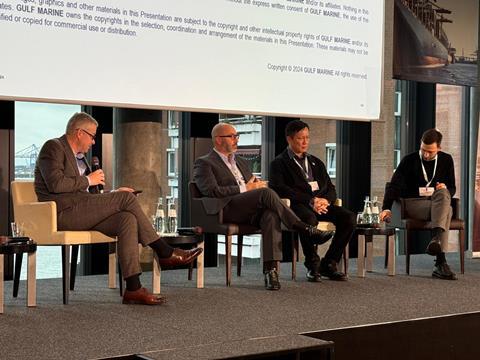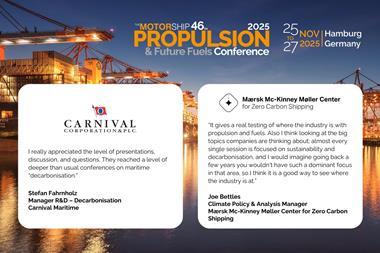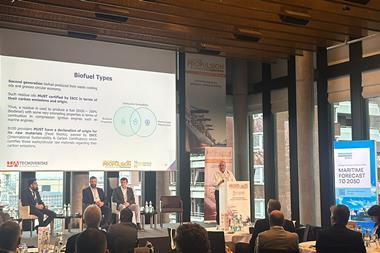Biofuels, retrofitting, and ammonia are revolutionizing the maritime industry’s journey towards a greener future.

Biofuel Solutions at Propulsion & Future Fuels
- Technological Innovations: Jorge Manuel Gomes Antunes discussed BioHFO, a system integrating B100 biodiesel with heavy fuel oil, reducing smoke emissions by 80% and significantly cutting NOx and sulfur emissions.
- Regulatory Challenges: Stefan Fahrnholz highlighted the regulatory drivers for biofuel adoption, such as European emissions standards, and the hurdles like storage limitations and engine compatibility.
- Operational Adjustments: Remco de Witte emphasized the practicalities of handling biofuels, noting new ISO standards and the cost-competitiveness of biofuel blends like B20 or B30 compared to marine gas oil.
Propulsion and Future Fuels: Pros and Pitfalls of Retrofitting Fleets for Sustainability
- Fleet Decarbonization: Wolfram Guntermann from Hapag-Lloyd discussed initiatives like upgrading propellers and hull modifications to improve hydrodynamics and investing in dual-fuel vessels.
- Retrofitting Challenges: The logistical complexities and high costs of retrofitting older ships were highlighted, with lessons learned from projects like the Brussels Express.
- Engine Power Limitation Optimisation (EPLO): Matthias Reichmann introduced EPLO for two-stroke engines, a cost-effective retrofitting option that reduces fuel consumption and greenhouse gas emissions by 3%.
Ammonia as a Marine Fuel: Discussions at Propulsion and Future Fuels
- Ammonia Engine Development: Kristian Mogensen from MAN Energy Solutions detailed their extensive work on ammonia engines, including over 5,000 hours of development and significant milestones in reducing NOx emissions.
- Emission Reductions: Key achievements include a 40% reduction in ammonia slip through design improvements and the elimination of after-treatment systems for NOx reduction.
- Challenges and Pilot Projects: Ongoing challenges include ensuring optimal engine performance and fine-tuning ammonia combustion, with pilot projects being crucial for proving the technology.







